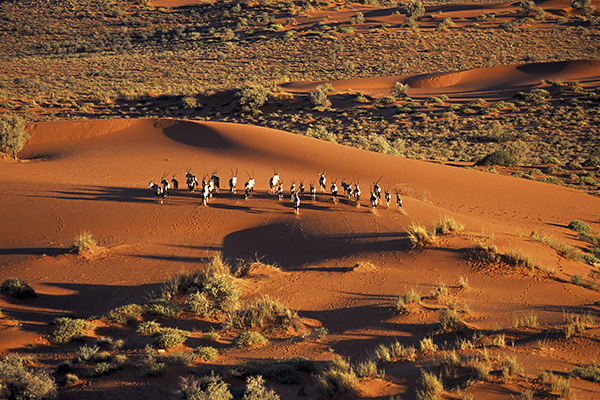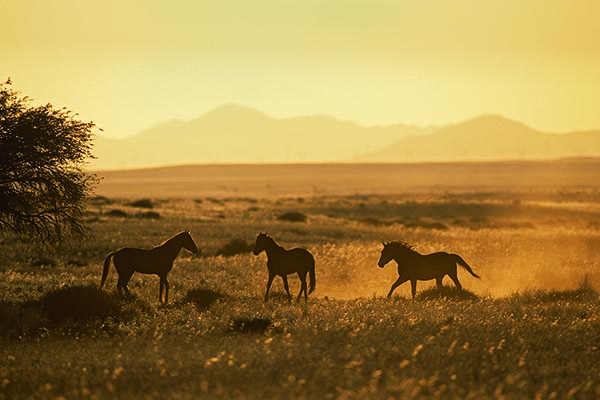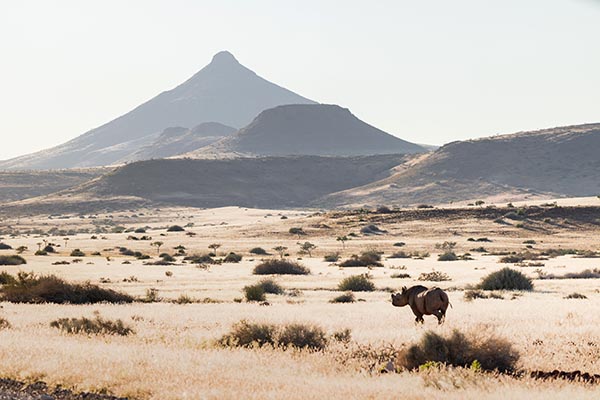Join the Gondwana Game Counts
Be Part of Namibia’s Wild Legacy
Every year in June or July, Gondwana Collection Namibia invites passionate nature lovers, wildlife enthusiasts, and conservation supporters to participate in the Annual Game Counts in our private nature parks, namely Gondwana Canyon Park and Gondwana Kalahari Park.
This is more than just a weekend getaway. It’s a chance to immerse yourself in the wild beauty of Namibia, contributing to vital wildlife monitoring efforts and to the protection our Namibas’s natural heritage.
✨ What to Expect
Spend an unforgettable weekend at one of our inviting Gondwana lodges, where comfort meets conservation. As part of your experience, you’ll help count wildlife, gather important data, and support initiatives that make a real difference.
🦓 How to Join
About two months before each event, we release exclusive, all-inclusive weekend packages.
🌍 Stay Connected
Visit our website and follow our online platforms to be the first to know when bookings open.
Let’s protect Namibia’s wild heart together.
Gondwana members are welcome to join the annual game counts in Gondwana Canyon Park and Gondwana Kalahari Park, thus contributing to our nature conservation efforts – and certainly having lots of fun!
It’s an annual wildlife survey where staff and guests help count animals in Gondwana Collection's private nature reserves. The goal is to understand how many animals live in the park, where they are, and how their numbers change over time.
The data collected in the annual game counts serve the expert management of Gondwana Collection’s private nature parks.
The game counts follow the same method every year so that results can be compared, and trends can be established. It is the “Fixed Route” method: counting is done on standard routes, from a vehicle, without binoculars, and apart from the number of animals their exact location; and their distance from the route is recorded. Routes have been chosen in such a manner that the park’s different habitats are covered.
From the data collected the total number of each species is calculated by computer for the specific park. Since small animals are more difficult to spot than larger ones, these projections are computed with correction factors for each species. The total area of each habitat and the total length of the routes through each habitat are taken into consideration as well. In this way a population estimate for certain wildlife species is obtained even though the entire park is not covered by the count.
Gondwana Canyon Park
Plains zebra
Mountain zebra
Blue wildebeest
Red hartebeest
Oryx (Gemsbok)
Kudu
Ostrich
Klipspringer
A variety of birdlife
Gondwana Kalahari Park
Giraffe
Plains zebra
Oryx (Gemsbok)
Springbok
Blue wildebeest
Kudu
Eland
Ostrich
Kori Bustard and other birdlife
You’ll be part of a small team driving a set route through the park.
You’ll help spot and count animals on both sides of the road.
Each team records the number and location of animals on a map.
All the data is shared in a fun evening presentation on Saturday.
You will be briefed on what route you will count and who your driver and team leader will be at the Friday evening dinner.
Be ready early on Saturday for the count (starts at 07h30).
Help spot animals, write down sightings, and enjoy the experience.
Join the group for meals and the Saturday evening braai and feedback presentation.
Gondwana's Nature Reserves
Gondwana Collection’s initial conservation dream inspired the establishment of several private nature parks across Namibia’s diverse landscapes - each one a sanctuary for unique wildlife, breathtaking scenery, and extraordinary plant life.

Gondwana Canyon Park
Established as a private nature reserve in 1995, Gondwana Canyon Park now covers an area of 1,160 km². Its scenic beauty lies in a striking landscape of plateau mountains and sweeping plains with occasional granite and dolerite hilltops. The quiver trees grow in photogenic clusters. A dedicated management team oversees wildlife conservation, including a programme reintroducing species which once were indigenous to the area.

Gondwana Kalahari Park
The 98 km² area of Gondwana Kalahari Park is home to animals which are typical for the Kalahari - like Springbok, Gemsbok, Jackal and Bat-eared Fox. Among the rich variety of birdlife found here are ostriches, kori bustards, and many other species. The park represents two vegetation types: the tree and shrub savannah of the southern Kalahari (grasses and acacias) and the Karas dwarf shrub land which is classified as part of the Nama Karoo.

Gondwana Namib Park
The Gondwana Namib Park borders the spectacular World Heritage Site ‘Namib Sand Sea’ renowned for its iconic Sossusvlei dunes. Spanning 127 km², the park encompasses two of the Namib’s three vegetation types: the sand-sea with a few grasses only, and the gravel plains with grasses and shrubs. Game moves freely between the park and neighbouring, state-owned Namib Naukluft Park as well as other privately owned guest farms.

Gondwana Sperrgebiet Rand Park
Located near Aus, the Gondwana Sperrgebiet Rand Park, managed by Gondwana’s marketing partner Klein-Aus Vista, offers a unique opportunity to explore the most biodiverse desert on the planet. It is a landscape of granite mountains, dry riverbeds and sweeping plains. To the east, the 510 km² park borders the Nama Karoo, and to the north the Namib, where the Wild Horses roam the sparsely vegetated plains of the Namib Desert.

Palmwag Concession
In 2019, Gondwana took over Palmwag Lodge & Camp and with it the management of the Palmwag concession area, a vast nature reserve that covers 5,500 km² bordering the Skeleton Coast Park. With over 100 lions, cheetahs, leopards and brown and spotted hyenas, Palmwag’s predator population is the largest outside Etosha National Park. Birdlife is prolific and diverse, and most of Namibia's endemic species are found there.
Looking for transport to various Gondwana lodges and destinations?
The Go2 Tourism Shuttle is a convenient and hassle-free option for all those who don't want to drive themselves. Available for N$790.00 per person per route. Book online and secure your seat now.



